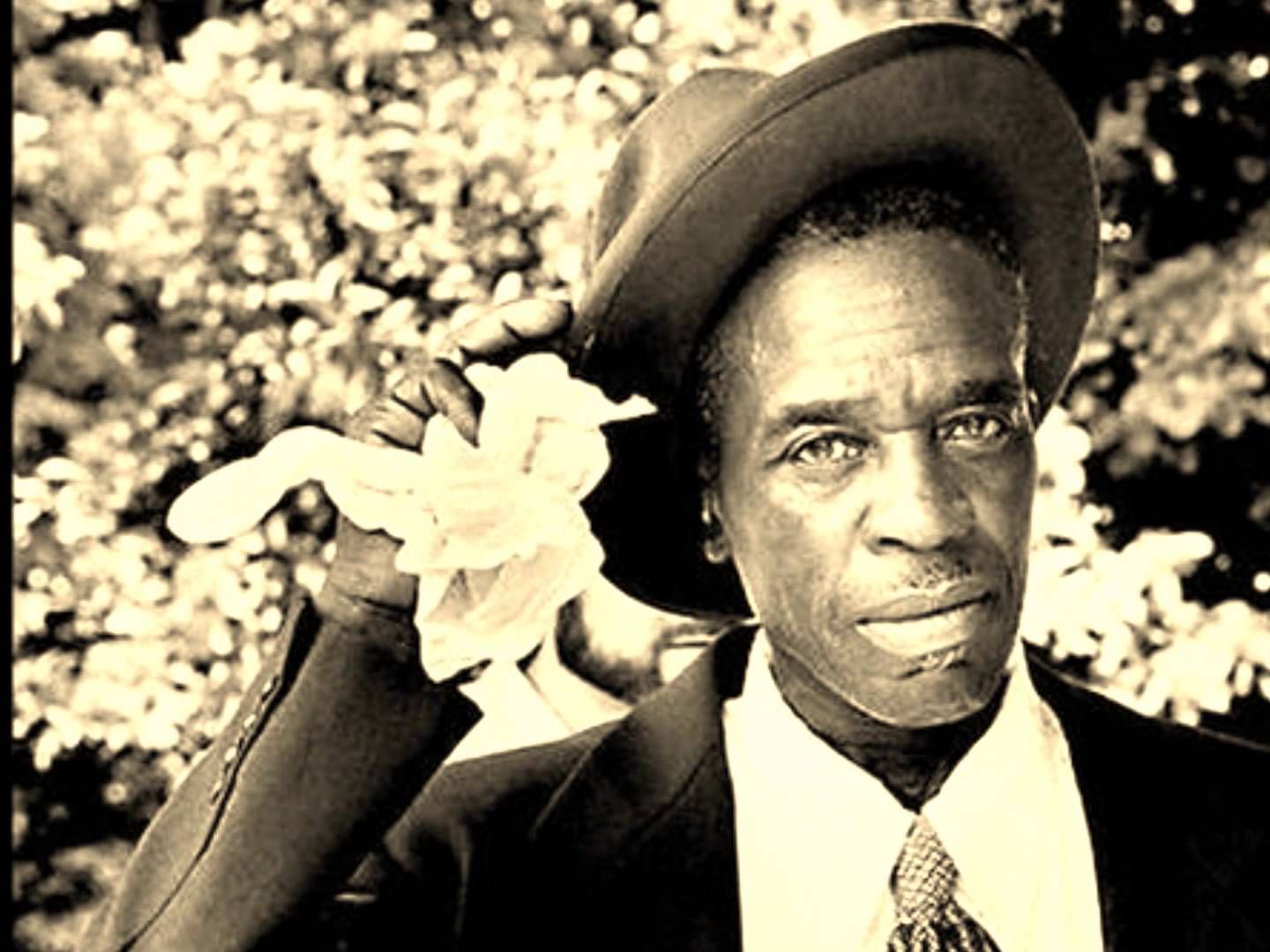James Hampton: The Visionary Artist Behind The Throne Of The Third Heaven
When you think about art, you probably imagine masterpieces created with years of training and expensive materials. But what if someone crafted an extraordinary work of art using nothing but everyday objects and sheer determination? Enter James Hampton, a name that might not ring a bell at first, but one that deserves recognition in the world of outsider art. His masterpiece, "The Throne of the Third Heaven of the Nations' Millennium General Assembly," is not just an artwork—it’s a testament to creativity, faith, and perseverance.
James Hampton’s story is one of those rare gems that remind us how passion can transform the ordinary into the extraordinary. Imagine this: a janitor by day, an artist by night, who spent over a decade creating a breathtaking installation in complete secrecy. Hampton wasn’t after fame or fortune; he was driven by a higher calling—a vision that guided his hands and heart.
So, why should you care about James Hampton? Because his life and work challenge conventional notions of art, talent, and success. In a world obsessed with labels and credentials, Hampton’s story proves that genius knows no boundaries. Let’s dive deeper into the life, art, and legacy of this remarkable man who left an indelible mark on the art world.
- Margaret Buckley Life Legacy Facts You Need To Know
- Dan Campbells Wife Pregnancy Rumors Family Life Latest Updates
Table of Contents
- Biography of James Hampton
- Early Life and Background
- The Artistic Journey of James Hampton
- The Throne of the Third Heaven
- Materials and Techniques Used
- Themes and Symbolism in Hampton's Art
- Recognition and Legacy
- Impact on Outsider Art
- Challenges Faced by Hampton
- Inspiration for Future Artists
- Conclusion: Why James Hampton Matters
Biography of James Hampton
Before we dive into the nitty-gritty of James Hampton’s art, let’s take a moment to get to know the man behind the masterpiece. Below is a quick rundown of his personal details:
| Full Name | James Hampton |
|---|---|
| Born | March 14, 1909, in Elloree, South Carolina |
| Died | November 4, 1964, in Washington, D.C. |
| Occupation | Janitor and Artist |
| Known For | Creating "The Throne of the Third Heaven of the Nations' Millennium General Assembly" |
James Hampton was born in a small town in South Carolina and eventually moved to Washington, D.C., where he worked as a janitor. What set him apart from the crowd was his secret life as an artist, which only came to light after his death.
Early Life and Background
Hampton’s early years were marked by hardship and resilience. Growing up in the segregated South, he faced numerous challenges but never let them dim his spirit. He was deeply religious and believed in the power of faith to shape one’s destiny. This spiritual foundation would later become the cornerstone of his artistic endeavors.
After moving to Washington, D.C., Hampton worked as a janitor at a naval hospital. While his day job was humble, his nights were anything but ordinary. In a rented garage, Hampton embarked on a mission that would define his legacy—an intricate, otherworldly throne made from scavenged materials.
The Artistic Journey of James Hampton
Hampton’s artistic journey began in the late 1940s when he claimed to receive a divine vision instructing him to build a throne. This wasn’t just any throne—it was meant to be a sacred space for a celestial gathering. With no formal training in art, Hampton relied on his intuition and resourcefulness to bring his vision to life.
The Throne of the Third Heaven
Completed in 1964, "The Throne of the Third Heaven of the Nations' Millennium General Assembly" is a towering installation that stands as a testament to Hampton’s vision. It’s not just a piece of art; it’s a spiritual statement that invites viewers to ponder the mysteries of faith and creation.
The throne is constructed from discarded materials like foil, wood, mirrors, and light bulbs. Despite its humble origins, the piece exudes an aura of grandeur and reverence. Hampton’s ability to transform trash into treasure is nothing short of miraculous.
Materials and Techniques Used
One of the most fascinating aspects of Hampton’s work is the materials he used. Instead of buying expensive supplies, he scavenged items from his surroundings—foil from candy wrappers, wood from old furniture, and mirrors from thrift stores. This resourcefulness speaks volumes about his creativity and ingenuity.
- Foil: Used to create a shimmering, otherworldly effect.
- Wood: Sourced from discarded furniture and repurposed into intricate structures.
- Mirrors: Added to reflect light and create a sense of infinite space.
Hampton’s techniques were as unconventional as his materials. He used glue, nails, and sheer determination to assemble his masterpiece. The result is a work of art that defies categorization and challenges traditional notions of beauty and craftsmanship.
Themes and Symbolism in Hampton's Art
Hampton’s art is rich in symbolism, reflecting his deep spiritual beliefs. The throne is a representation of a celestial gathering, where earthly concerns are left behind, and divine truths are revealed. Here are some of the key themes in his work:
- Faith: Central to Hampton’s vision, faith is the guiding force behind his creation.
- Transformation: The use of discarded materials symbolizes the potential for transformation and renewal.
- Unity: The throne represents a space where all nations and peoples come together in harmony.
These themes resonate with viewers on a profound level, inviting them to reflect on their own beliefs and values.
Recognition and Legacy
Unfortunately, Hampton’s genius went unrecognized during his lifetime. It wasn’t until after his death that his work was discovered by art collectors and critics. Today, "The Throne of the Third Heaven" is housed in the Smithsonian American Art Museum, where it continues to inspire and awe visitors.
Hampton’s legacy extends beyond his artwork. He has become a symbol of outsider art, proving that creativity knows no boundaries. His story encourages artists to pursue their passions, regardless of societal expectations or limitations.
Impact on Outsider Art
Hampton’s work has had a significant impact on the outsider art movement. By showcasing the power of self-taught artists, he paved the way for others to gain recognition in the art world. His story challenges the elitism often associated with the art industry and highlights the importance of inclusivity and diversity in creativity.
Challenges Faced by Hampton
Creating such a monumental work of art was no easy feat. Hampton faced numerous challenges, from financial constraints to societal prejudices. Working in secrecy, he had to balance his day job with his artistic pursuits, often sacrificing sleep and leisure time to bring his vision to life.
Despite these obstacles, Hampton remained steadfast in his mission, driven by a belief in the divine purpose of his work. His perseverance serves as a powerful reminder of the strength of the human spirit.
Inspiration for Future Artists
For aspiring artists, James Hampton’s story is a source of inspiration. It shows that greatness can emerge from the most unexpected places. Whether you’re working with limited resources or facing societal barriers, remember that your unique perspective has value.
Hampton’s approach to art—using everyday materials to create something extraordinary—offers a valuable lesson in creativity. It’s not about the tools you have but how you use them. So, the next time you’re feeling stuck, take a cue from Hampton and let your imagination run wild.
Conclusion: Why James Hampton Matters
James Hampton’s life and work remind us that art is more than just a visual experience—it’s a journey of self-discovery and expression. His masterpiece, "The Throne of the Third Heaven," is a testament to the power of faith, creativity, and perseverance.
As we reflect on Hampton’s legacy, let’s take a moment to appreciate the beauty in unconventional art forms. Whether you’re an artist, a collector, or simply someone who appreciates creativity, James Hampton’s story has something to offer you.
So, what’s next? Share this article with a friend, leave a comment below, or explore more about outsider art. Together, let’s celebrate the visionaries who challenge the status quo and inspire us to see the world through a different lens. After all, that’s what James Hampton would want us to do.
![James Hampton [Profiles] • Instagram, Twitter, TikTok Foller](https://static01.nyt.com/images/2021/04/10/obituaries/10Hampton-obit1/Hampton-01-mediumSquareAt3X.jpg)


Detail Author:
- Name : Amara Becker
- Username : keven.muller
- Email : edna64@harris.com
- Birthdate : 1976-09-21
- Address : 102 Jenkins Bypass Port Devantechester, IN 16991-4542
- Phone : 424-237-1412
- Company : Greenholt Inc
- Job : Baker
- Bio : Beatae provident reprehenderit doloremque dignissimos. Perspiciatis est tenetur rerum aut assumenda. Enim quasi et sunt consequuntur. Eum sed eligendi est dolor blanditiis laborum ut.
Socials
twitter:
- url : https://twitter.com/dominic.davis
- username : dominic.davis
- bio : Molestias possimus tenetur est ex voluptate. Quae nostrum aliquid dolorum modi. Optio hic quam et. Voluptatem suscipit libero exercitationem sapiente repellat.
- followers : 5163
- following : 2479
facebook:
- url : https://facebook.com/dominic_dev
- username : dominic_dev
- bio : Dolores maiores expedita quis rerum in sed.
- followers : 5191
- following : 1713
linkedin:
- url : https://linkedin.com/in/davisd
- username : davisd
- bio : Dolores hic totam est molestiae eos mollitia.
- followers : 6334
- following : 591
tiktok:
- url : https://tiktok.com/@dominic1636
- username : dominic1636
- bio : Molestias perferendis nesciunt eius quo.
- followers : 4527
- following : 2028